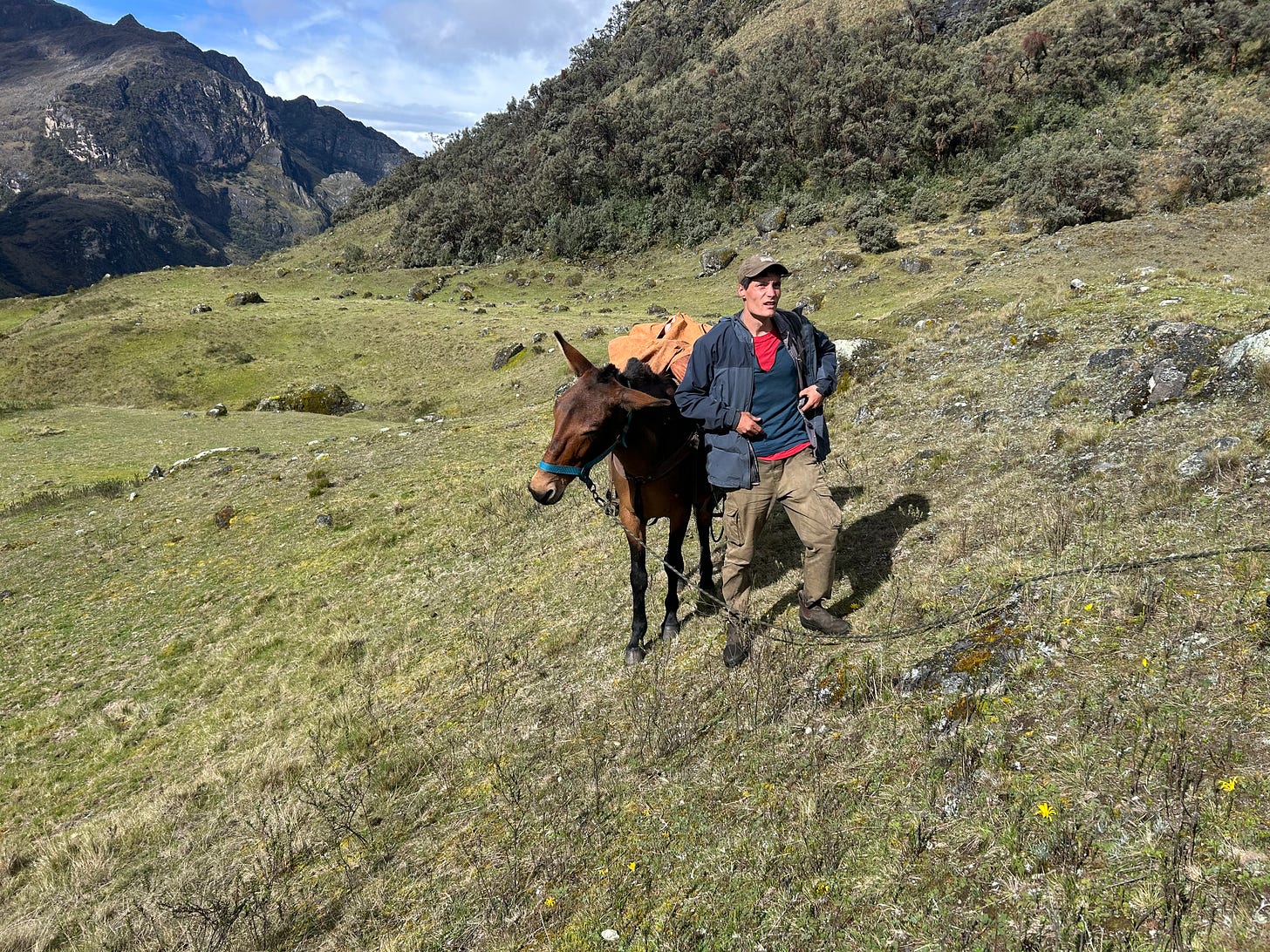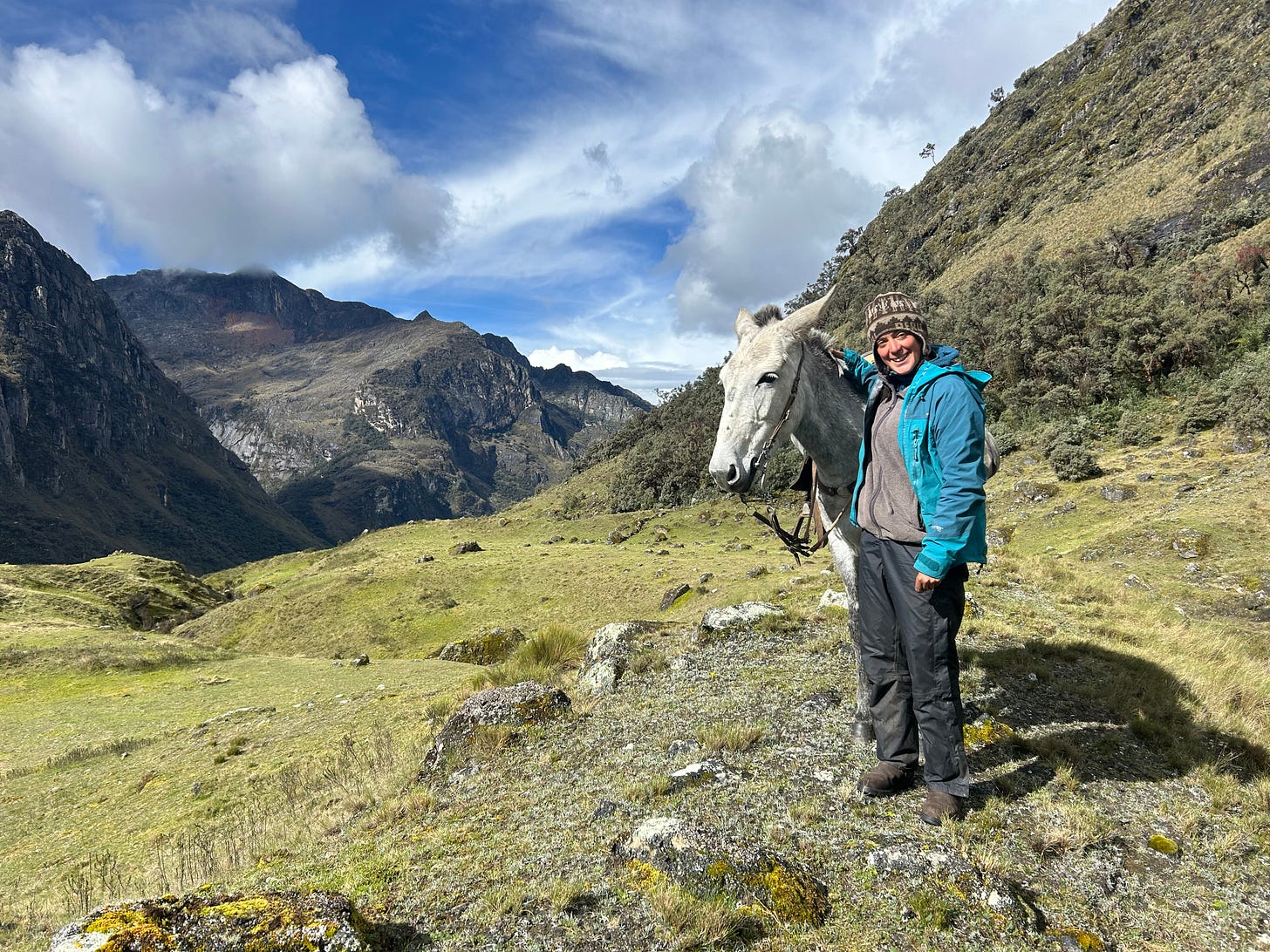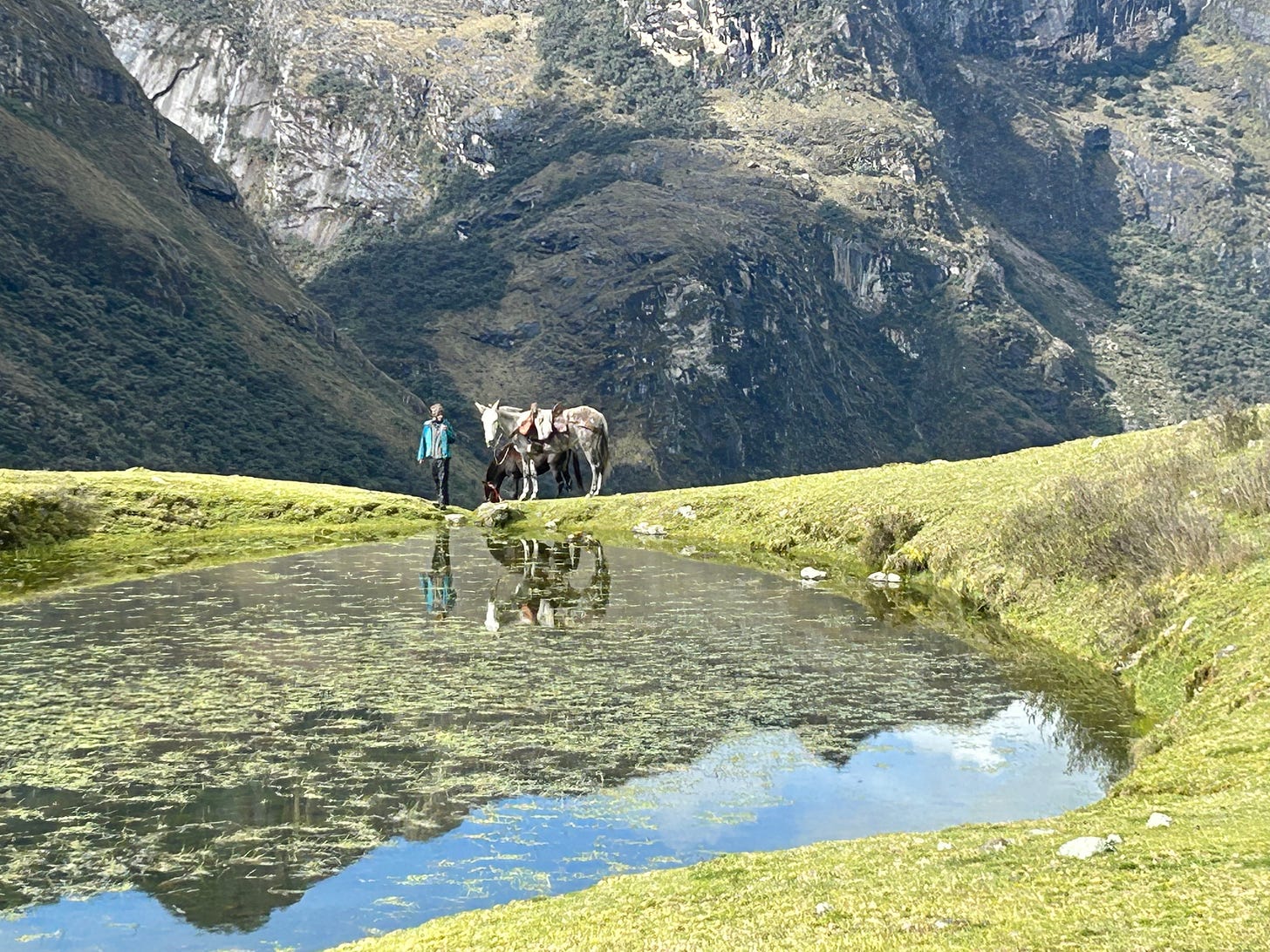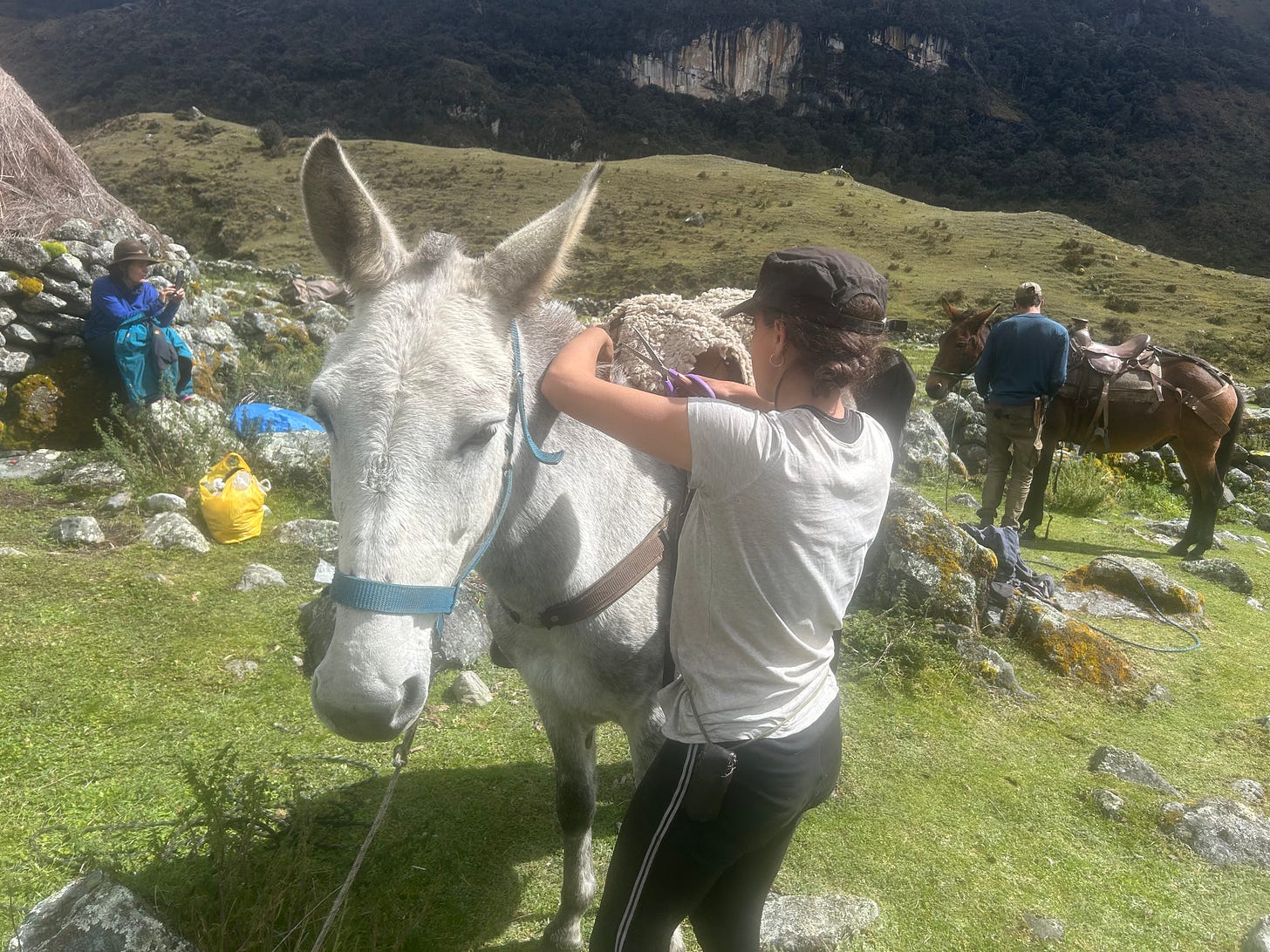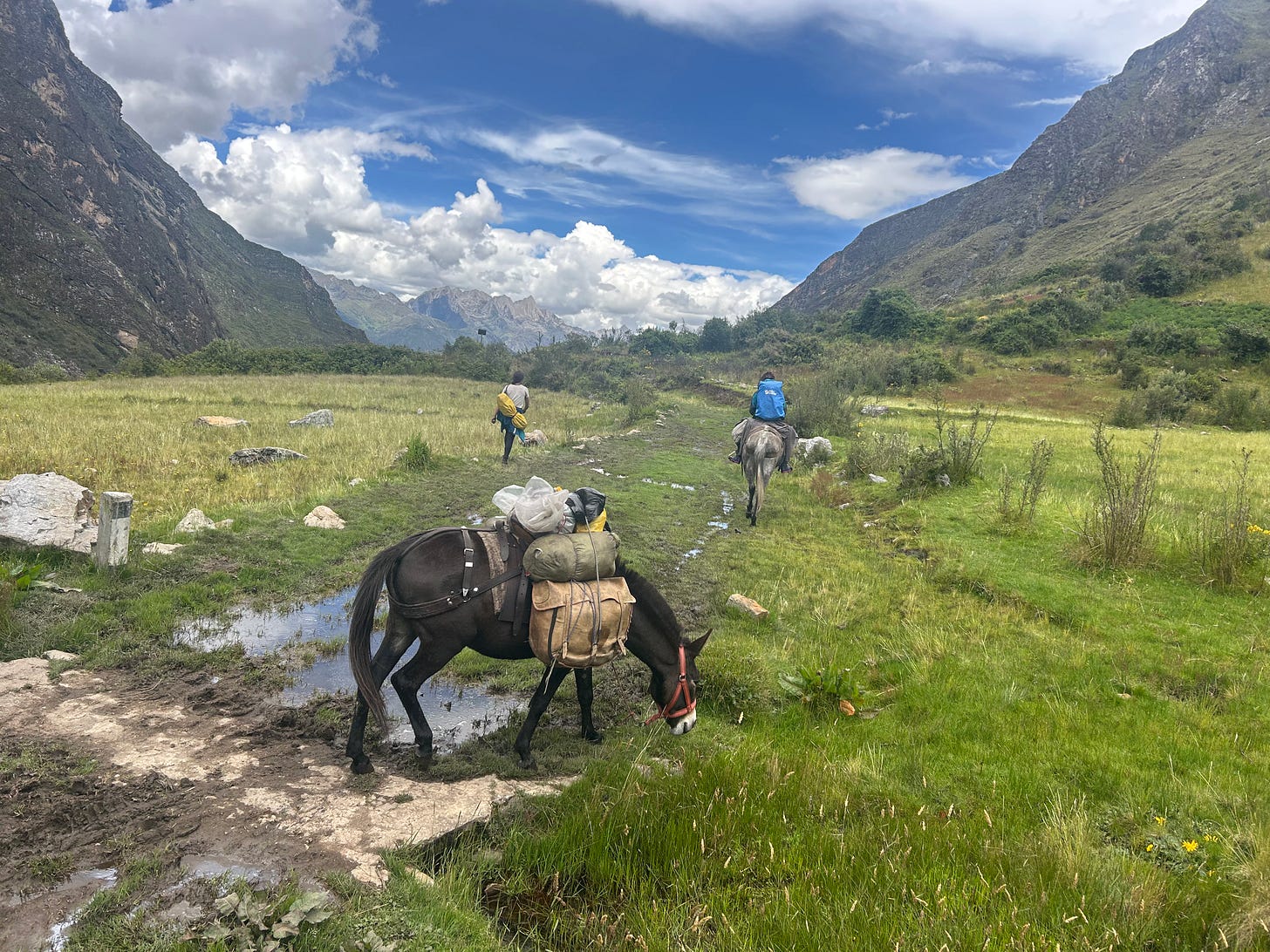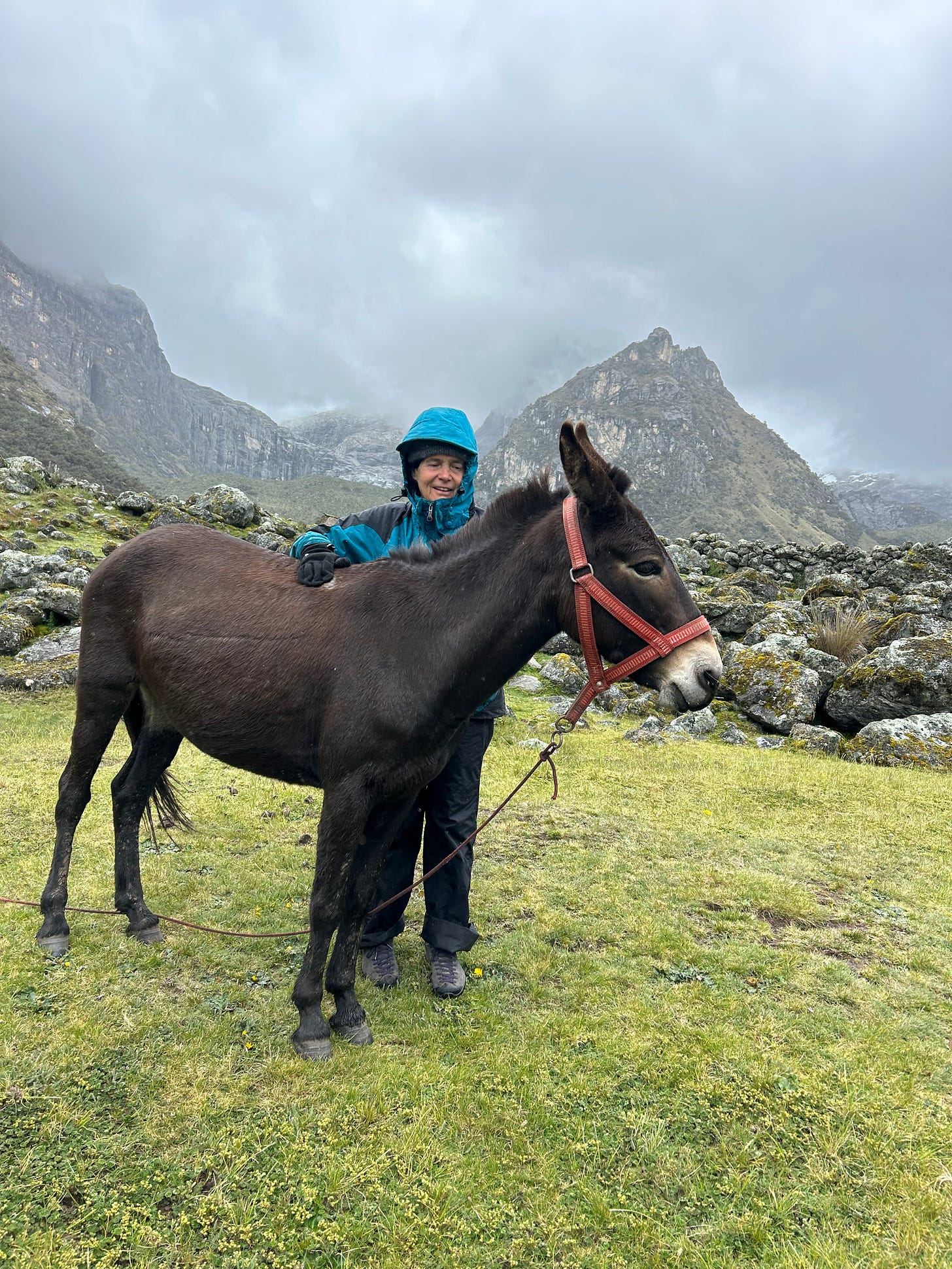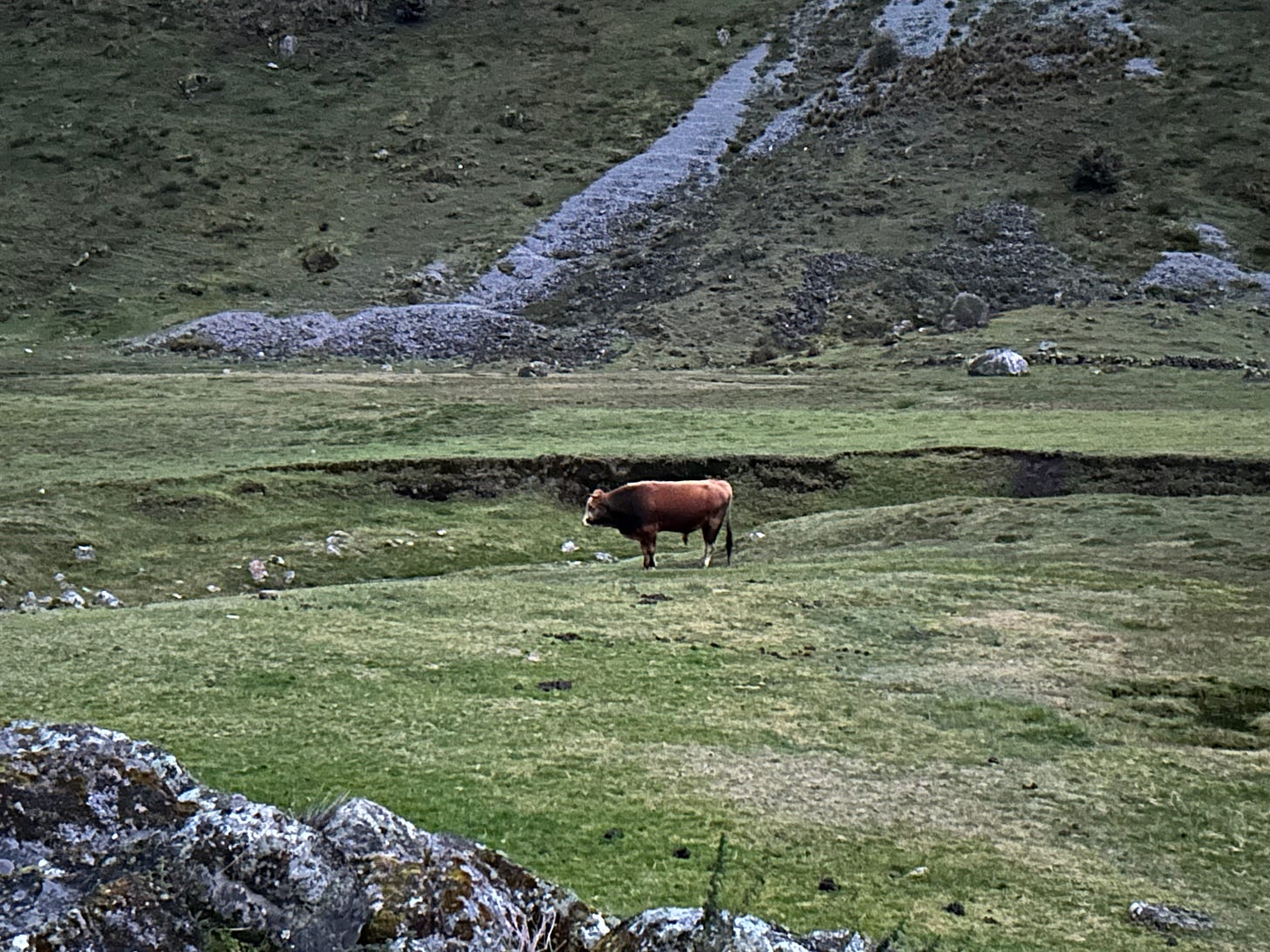The beauty of mules, apart from their unquestionable physical beauty, lies in their stamina, wisdom, intelligence, humour, willpower, and last but not least, insatiable hunger.
This is the story of 3 mules, Pachi, Muñi and Ninja. They belong to my son Máté and his girlfriend Eleanora, who have been travelling through the Andes with them in Peru for many months. The following stories are just small fragments of the mosaic of their own journey, which I hope they will write down themselves, in some form one day.
"The mule always appears to me a most surprising animal”, wrote Charles Darwin. “That a hybrid should possess more reason, memory, obstinacy, social affection, powers of muscular endurance, and length of life, than either of its parents, seems to indicate that art has here outdone nature."
The wiki article is rather informative: https://en.m.wikipedia.org/wiki/Mule
Pachi is the largest of the 3, a male and in his way the most sensitive. Easily upset by unforeseen developments - bogs, flying plastic bags, hailstones or the momentary disappearance of one of his female companions, I felt him hesitate beneath me several times, when we came to a fast-flowing river, or a landslide. Then he quickly made up his mind, and ploughed or leapt through it, leaving me hanging on for dear life. Passing through forests of the beautiful native queuna tree, I have to be careful not to get swept off his back by low hanging branches or brambles - he just keeps going. (https://www.tierrasvivas.com/en/travel-blog/native-trees-of-peru)
Muñi is the cleverest, most elegant and dexterous of the female mules, speckled greyish white and sometimes camouflaged among the rocks and snowy peaks on the skyline.
When we’re travelling, she’s always in the lead, closely followed by Ninja, the smallest and cheekiest of the three. Ninja carries the bags - 44 kg, carefully weighed at 22kg each side - food for long stints in the mountains, far from the nearest villages or shops, with our tents, wet weather gear, and the metal tools Máté needs to regularly shoe the other mules.
Ninja has a mind of her own, and has been known to break loose, run off, and loves to prance and jump. In our steady convoy through the mountains, she playfully nips at Muñi’s bum, and always heads off Pachi if he dares try and overtake.
When a huge bull headed towards the mules on the high meadows, she attacked him fearlessly, kicking her hind hooves high in the air close to his face, forcing him to flee, bellowing.
A final note on the difference between mules and donkeys because, as Louise A. Jackson notes in The Mule Men: A History of Stock Packing in the Sierra Nevada, (Missoula, MT: Mountain Press 2004), mules are bigger and brighter, and our mules are much admired and sought after, in every donkeyed village we go through. They’re also far better than horses in the mountains, as they’re sturdier on their feet, and watch carefully where they’re going, which is just what you want on a narrow path with a steep drop of hundreds of metres at your elbow. Anyway, for all you animated aficionados, here’s a herd of delightful but rather dumb donkeys, clustered round our chosa, the stone huts thatched with long grass where we often cook and shelter.
I’m sorry not to include any politics in this post, but I will say this: I’d rather be led by mules, than by donkeys.
More tall tales from the high Andes soon.
As I like to include some music with every post, here’s Tom Waits, who clearly knows a thing or two about animals, with his chart-busting hit, Get Behind the Mule, from the album Mule Variations:





